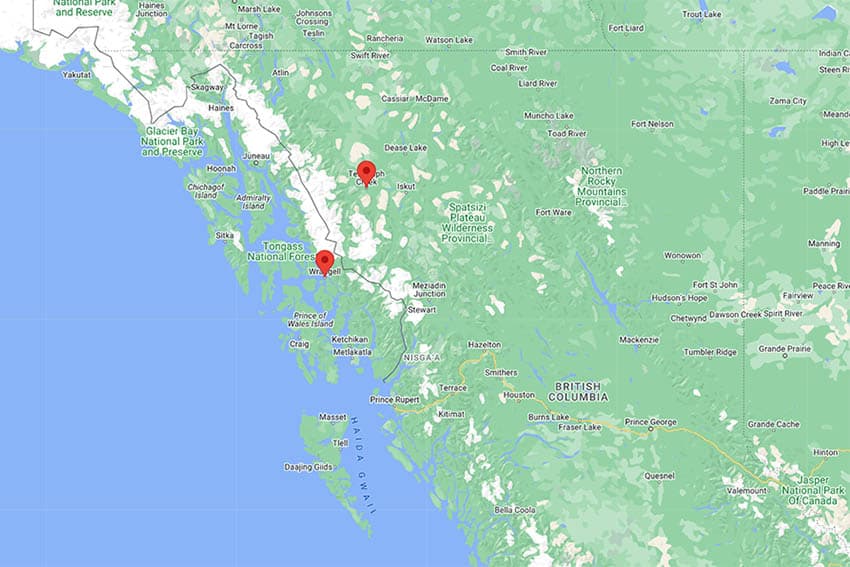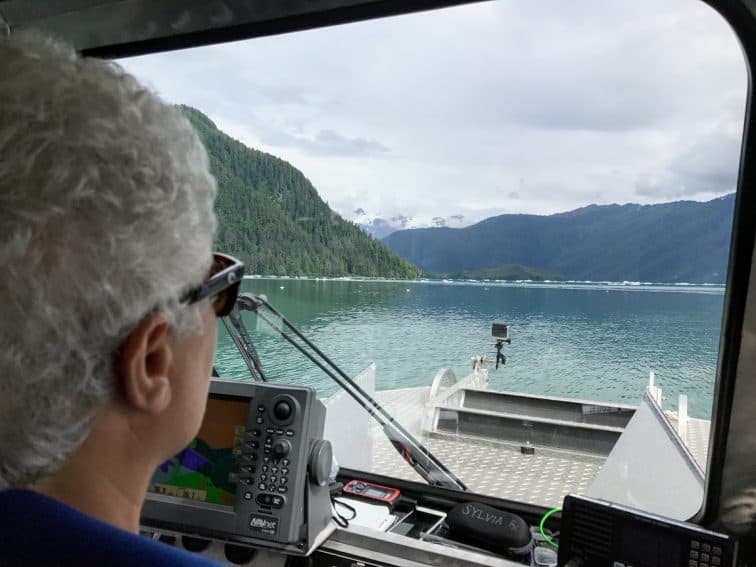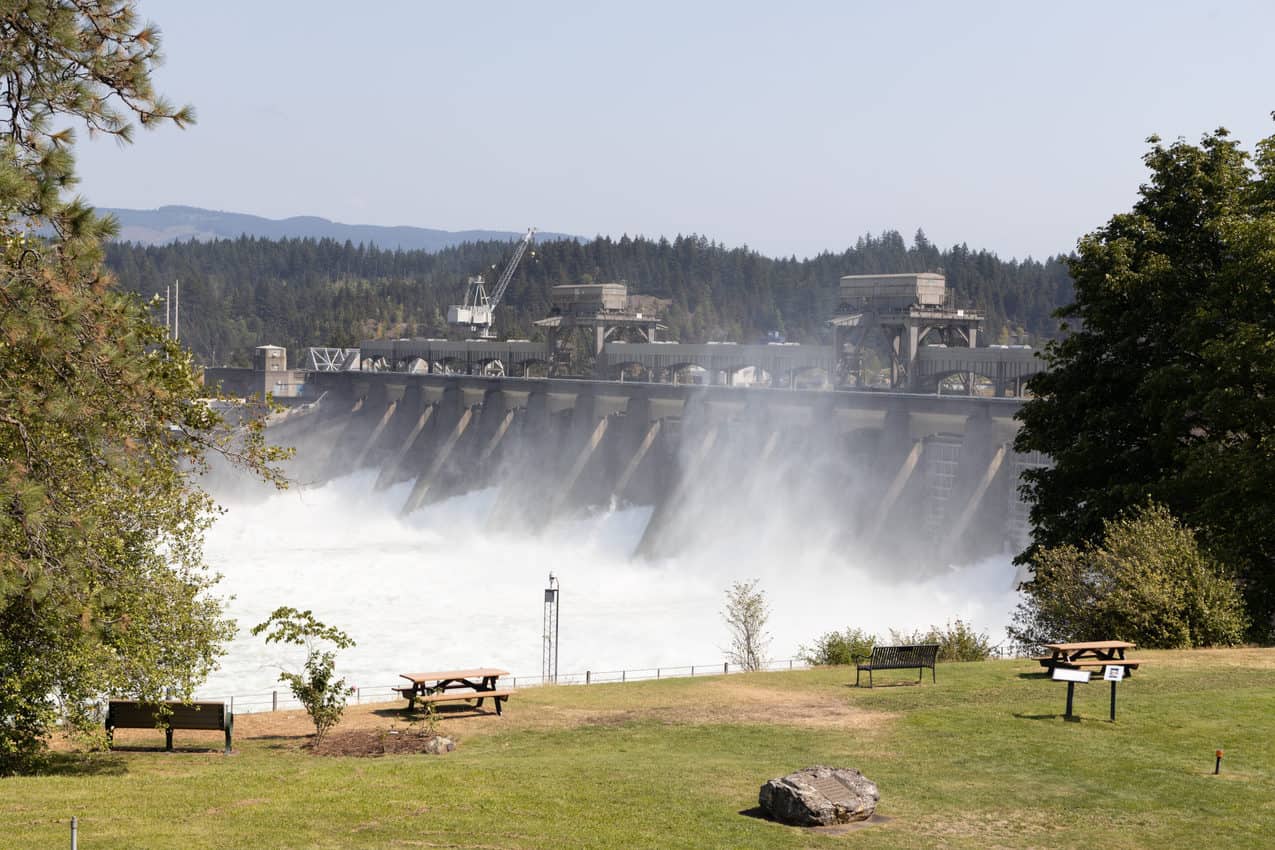
On Alaska’s Stikine River Up in a jet boat, down in a raft
By Ed Readicker-Henderson

I’ve decided to blame John personally for the lack of moose. Three years ago, the first time we went down the Stikine River together, John promised moose.
This year, John says, “This time. Really.” Already we’ve seen black bears swimming across the river, grizzlies walking in the foothills. Wolves have come out to watch us pass by, and there are mountain goats looking like smug exclamation points on every cliff side. It’s like traveling inside a postcard.
The Stikine River rises in central British Columbia, cutting a fairly direct line for the Southeast Alaska coast. John Muir called the Stikine “a Yosemite 100 miles long,” on his 1879 trip, and he turned back before he even got to the best parts.
A half-mile wide in places, the river drains the largest area of any undammed river in the western hemisphere-more than 20,000 square miles-and it flows fast. Not long after Muir’s trip, hopeful miners headed for the Yukon goldfields tried to use the Stikine as a shortcut. They traveled in flat-bottomed steamships that made the upstream trip in a week; the trip downhill, running with the five-knot current, took less than two days.
Wrangell Alaska
We’re doing the opposite: from the mouth of the river, in Wrangell, Alaska, a day and 150 miles up the Stikine in a jet boat, to Telegraph Creek, British Columbia; from there, six days back down in a raft. Most of the restaurants close at 3 PM, but there’s always bar food at the Hungry Beaver, which stands where the British fort once was, back when they leased the place from Russia for two thousand otter pelts a year.

Best of all, the town has a loopy optimism all its own-most of the houses have sun porches, even though they’re in the middle of the rainforest. We leave Wrangell in the Iskut, an aluminum jet boat that can run 40 mph in eight inches of water. Within minutes, we’re in the glacier-silt water of the Stikine, headed upstream. Alaska Vistas is the only outfitter to guide rafting trips on the Stikine every year.
A Short Season
The season for traveling the river is short, usually June through mid-August, and it’s short for good reason-three years ago, on a September trip, the winter weather patterns began, I watched Sylvia paddle sixteen hours a day against a headwind. Somehow she still managed to keep her composure when one of the other clients asked if there was any place to plug in a blow-drier.
This time, on the first trip of the year, we ride with the current, a risky but manageable Class II. For the float from Telegraph Creek back to Wrangell, there are no rapids, but thanks to the Stikine’s huge drainage area, there are enough snags and sweepers, enough braids in the channel, to make the river a serious danger for the unprepared.
Although only a couple dozen people try the river on their own each year, at least a few of them end up on the river banks, hypothermic, watching the current take their boats away. It costs about $1200 to get a jet boat ride from Wrangell to Telegraph Creek (day trips on the lower river run about $175); rescues come free, but only for the extremely lucky. Over the next week, we see only one other boat, and it’s headed away from us.

No permits are required on the river but pack an extra rabbit’s foot. It’s better to travel with the experts. My trip, eleven days all-inclusive, runs barely double what the jet boat ride alone costs, and I have zero worries. John and Sylvia have been guiding the river for a decade, and they go prepared.
Telegraph Creek-a bunch of buildings falling down, one church in surprisingly good shape, and a single store that also serves as a café and hotel is the only community along the river, so you’ve got to be self-sufficient on the Stikine. In addition to all the camping gear, we’ve got two huge coolers, dry bags, emergency gear, five pounds of chocolate. It does trouble me that there’s only one six-pack of Coke, though.
We push the raft into the current; the river sweeps the raft through a slow curve a mile below Telegraph. It’s that easy to be completely away from civilization. A few Taltan fishing camps dot the river banks, but this time of year, the camps are abandoned shacks hidden by trees, a few drying racks by the river’s edge.
Quiet Days on the River
The days are quiet on the river. We spend five or six hours in the raft letting the current do the work, making stops to look for geodes or petroglyphs. In the lower river, there are a couple of hot springs – only one has leeches.
In the early evening, we pull onto huge sandbars to camp. One has a view of twenty glaciers; from another, we listen to spring avalanches on the high mountains. In the morning, harbor seals pop up behind the raft, more than a hundred miles from the ocean.
They look like black basketballs floating low in the water while they make sure we aren’t just really, really big salmon for their lunch. The fact that it’s a pristine river in the middle of nowhere means there are plenty of people who want to do something to it.
Dam Plans
There have been plans for years to dam it below the Grand Canyon of the Stikine; this would wipe out nearly 200 miles of river eco-system. Mining operations recently stopped on the Iskut, the main Stikine tributary, but fluctuations in world gold prices could reopen the mines and pour thousands of gallons of toxins into the river. Friends of the Stikine are fighting the good fight.
The site is worth visiting for the lush photographs that they have in galleries. But for now, the only sound on the river are the screeches of arctic terns. By the last day, the relatively dry British Columbia mountains give way to the Southeast Alaskan rainforest.
When the sun unexpectedly comes out, we strip off rain gear and watch the broad river banks steam in the sudden warmth. And at twilight, two snow geese fly ten feet above my head, the white of their wings matching the whites of the clouds, the glaciers. I’m in a forgiving mood. “Moose next time?” I ask John. “I promise.”
- These 9 U.S. National Parks Require Reservations in 2024 - April 17, 2024
- Take a Hike in Olympic National Park - April 17, 2024
- The Wild Mississippi: 2340 Miles Across Ten States - April 8, 2024





